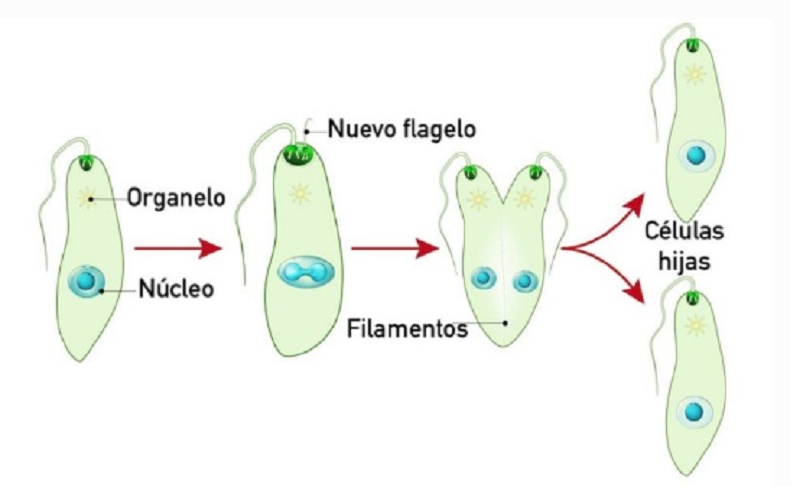What is binary fission?
We explain what binary fission is, its stages, the types that exist and various examples. In addition, other forms of asexual reproduction.
-
What is binary fission?
Bipartition or binary fission is a mechanism of asexual reproduction of unicellular living beings , typical of prokaryotes , that is, of bacteria and archaea. It consists of the duplication of the individual’s cellular DNA , as a previous step to the division of the cytoplasm into two. Thus, it gives rise to two daughter cells with identical genetic material.
This is the most common form of reproduction in the bacterial world. In some species it can occur at an impressive rate (an Escherichia coli bacteria can be divided once per 20 minutes), as long as the surrounding environment conditions are adequate.
In addition to the rapid colonization of the environment, this reproductive rhythm has adaptive purposes : with that reproductive rhythm, the mutation rate is usually high. This produces new bacterial strains better adapted to the environment (for example, more resistant to antibiotics). In part this is the reason for the great evolutionary success of bacteria, present in absolutely the whole world.
Binary fission takes place through a series of stages :
- The DNA is replicated to create an exact copy of itself.
- Each set of DNA is oriented towards an opposite region of the cell . Cell organelles are replicated as well.
- The FtsZ protein, which forms filaments around the axis of division of the cell, is activated . These filaments grow the membrane into the cytoplasm, narrowing the cell.
- A septum (or waist) is formed that gradually narrows until it completely separates the cytoplasm into two , thus forming two identical individuals (daughter cells), but of independent life.
-
Types of binary fission
There are several possible forms of binary fission, depending on the way in which the unicellular organism divides itself:
- Regular , when the cell divides symmetrically.
- Irregular or amoeba type , when the divisions occur in rhizopods (“fingers”) or in a disorderly manner.
- Longitudinal , when the cell divides from its horizontal axis.
- Transversal , when the cell divides perpendicular to the axis of the cell spindle.
- Oblique , when the cell divides longitudinally at first, but then becomes transverse.
-
Examples of binary fission

There are plenty of examples of this type of reproduction . Most prokaryotic organisms and some eukaryotes use it. In fact, the fight against bacterial infections is so arduous because its bipartition rate is high. Thus, they reproduce by binary fission:
- Bacteria of all types and genders , such as the mentioned Escherichia coli , and archaea such as the extremophile Methanobacterium bryantii .
- Primitive eukaryotes such as Crypthecodinium cohnii or paramecium species .
- Some protozoa such as the amoeba ( Amoebidae ).
-
Other types of asexual reproduction
The mechanisms of non-sexual reproduction are those that involve a single individual. Therefore, they have little or no genetic variation. In addition to binary fission, these types of reproduction include:
- Budding . The parent forms extensions or prominences of his body. Eventually, these extensions can separate from him and have a life of his own. In other cases, they remain united and start a colony. When it occurs at the cellular level, it is anasymmetric mitosis .
- Sporulation . It consists of the production within cells or in specialized organs (sporangia, for example), of cells wrapped in a super resistant shell, known as spores. These are able to survive long periods and very hostile conditions, and then produce a new individual when the environment is conducive.
- Parthenogenesis . The new new individual is created from the development of unfertilized female sex cells. Therefore, it is genetically equal to the parent. Some animals can perform it, such as flatworms, rotifers, tardigrades, insects, amphibians , fish and crustaceans , but also some reptiles.





